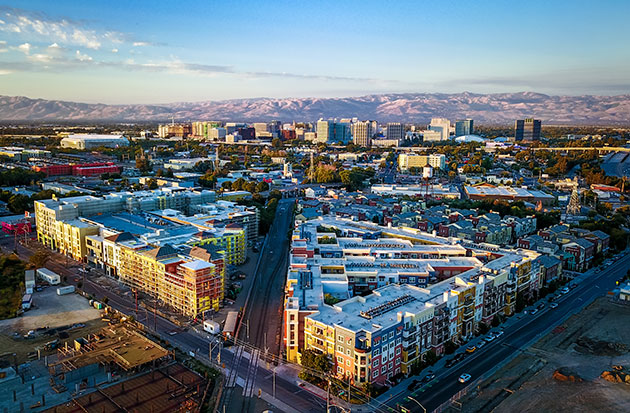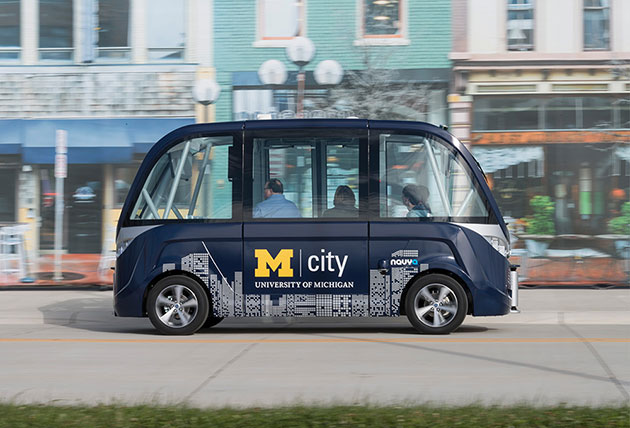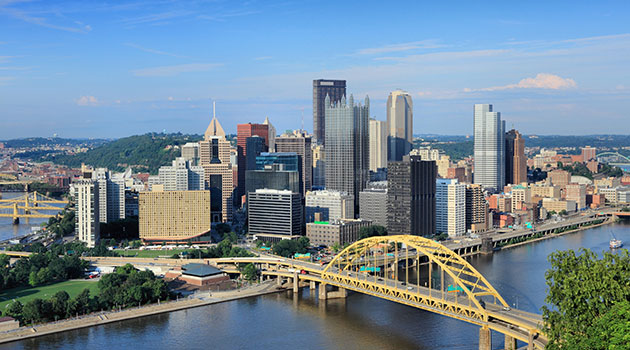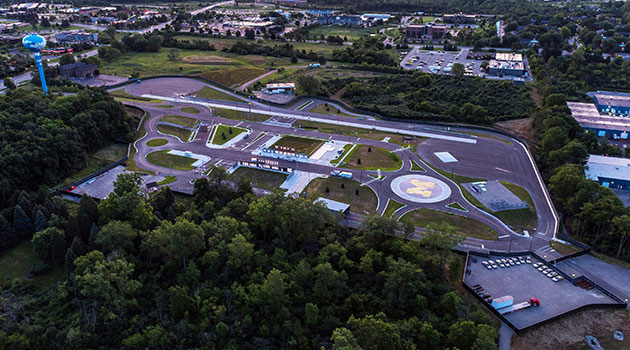When autonomous vehicles hit the streets, will you be ready for them? What about your city?
The driver-free autos have the potential to transform nearly everything about urban design and development—but a large number of the planet’s most populated places aren’t quite sure what to make of the coming change.
And while the vehicles will undoubtedly alter the global transportation landscape, the transformative process will be incremental, with each new facet having to be debated, approved, and overseen locally.
To better gauge just how prepared the world is for the coming technological sea change, Bloomberg News spent the last year checking up on the urban epicenters most likely to be at the vanguard of the autonomous movement—looking at 53 metropolitan areas from all over the world, including 25 in the United States.
For most, the idea of preparing for self-driving cars at all was still novel. A majority of cities surveyed by Bloomberg only began seriously contemplating the ramifications of the technology between 1-3 years ago, according to the analysis.
(In many smaller municipalities, officials reported they haven’t yet broached the subject—despite the vast negative impact the vehicles could have on their budgets.)
Still, some of the cities involved seemed ready to take the technological bull by the horns and warmly welcome a lifestyle of passengerhood into their towns.
Here are the five most well-prepared cities in the U.S. for autonomous vehicles—and what they’re doing to gear up for the driverless revolution.
San Jose, California

It shouldn’t be surprising that the Bay Area city is well on its way to welcoming driver-free streets. The region as a whole is largely responsible for inventing the technology, thanks primarily to resident Google, which now develops the autos through its self-driving arm, Waymo.
Situated in the heart of Silicon Valley, San Jose has been privy to autonomous vehicle (AV) testing for years—and with the city looking at an anticipated population boom of nearly 40% over the next 30 years, it’s gotten serious about the technology’s potential for freeing up space to fit nearly 470,000 new residents.
Among a spate of other initiatives meant to foster the proliferation of AVs, the city launched a Transportation Innovation Zone last summer, where testing for on-demand shuttles and driver-free cars can be fast-tracked and new traffic rules and land use policies can be examined in real-time.
The city is also home to a new Autonomous Driving Garage run by computer chip giant Intel, where the company’s latest self-driving technology will be showcased in an attempt to move the needle on public acceptance of the autos.
Ann Arbor, Michigan

Not to be outdone by the new-age transportation hub of Silicon Valley, Ann Arbor has welcomed a number of initiatives to help protect its place as a harbinger of the modern automobile.
The city is home to two important projects working to advance the cause of self-driving cars: Mcity and May Mobility.
The former is a massive AV testing and research facility run by the University of Michigan, mocked up to look and feel like a town. And the project has no shortage of influential backers and participants, including Michigan’s own Ford Motor Company and General Motors, along with international players like Honda and Toyota.
May Mobility is a self-driving shuttle launcher, with the futuristic vehicles setting forth from the facility, interacting on real roads with real drivers, and collecting reams of useful information for further research on the cars.
(The city also gets bonus points for the autonomous boost it will likely receive from neighboring Detroit, which last year appointed a Director of Mobility Innovation to spearhead self-driving tests, create a regional mobility plan, and drum up funding for future research.)
Boston, Massachusetts

The historic East Coast city recently laid out its ambitious future transportation policy: “Zero deaths, zero injuries, zero disparities, zero emissions, zero stress.” And while the initiative sounds like a large undertaking (and no doubt one that produces slightly more than zero stress) the city has the intellectual goods—and progressive spirit—to back it up.
Last year, Boston launched several projects intended to modernize a 191-acre waterfront industrial district by populating the area with new-age driving technology. (Support for the initiatives came from the Mayor’s Office of New Urban Mechanics, itself a specially created department to foster transportation innovation.)
The city acts as home to several key players in the AV revolution, as well, including the powerhouse Massachusetts Institute of Technology and fast-rising self-driving start-up, nuTonomy.
Its roads have been targeted for experiments by both entities, with nuTonomy partnering with rideshare giant Lyft in an attempt to launch the country’s first wide-scale autonomous ride-hailing program, and MIT nurturing start-up company Optimus Ride, which is looking at integrating AVs into residents’ daily transportation diets by transporting them the short distances from subway stations and bus stops to work or home.
Pittsburgh, Pennsylvania

The Steel City helped put Uber’s AV program on the map when it opened its doors to the company’s driver-free taxis—and let Uber offer autonomous rides to real customers, a world first.
While their relationship with the rideshare giant eventually soured, city leaders learned a lot from the experience, they told Bloomberg, naming the need for more data sharing, tighter coordination between city officials, private businesses, and state regulators, and more carefully formed pilot programs as major takeaways from the ordeal.
Aside from its hard-earned knowledge, Pittsburgh also benefits from Pennsylvania’s lax self-driving regulations and the brilliant minds drawn there by Carnegie Mellon University’s prestigious Robotics Institute. Along with creating taxi regulations, hammering out new traffic rules, and experimenting with different land use and transit planning policies, officials said the city hopes to use its head-start on AV development to focus on parking issues and how to free up more space down its historic, narrow streets.
Austin, Texas

Everything’s bigger in Texas, including the potential for self-driving cars.
The state capital has long been friendly to the idea of AVs, acting as the first place outside of California to invite the testing of driver-free prototypes. Sweetening the pot was the repurposed city airport, which was turned into a 700-acre transit-focused development on which Google ran a number of self-driving experiments.
The city also recently gave the proactive OK for “personal delivery robotic devices,” although they must top out at 300 pounds.
And Austin has also been busy mapping out its future transportation destiny. The city released its “Smart Mobility Roadmap” earlier this month, a draft of recommendations on how to integrate self-driving technology more seamlessly into the city, through everything from shared mobility services to land-use policies to smart sources of funding.
City leaders were so confident in Austin’s self-driving role, they offered its roads to Google for the company to take a blind man on an autonomous test drive—literally proving that just because one can’t see the future doesn’t mean one can’t prepare for it.
